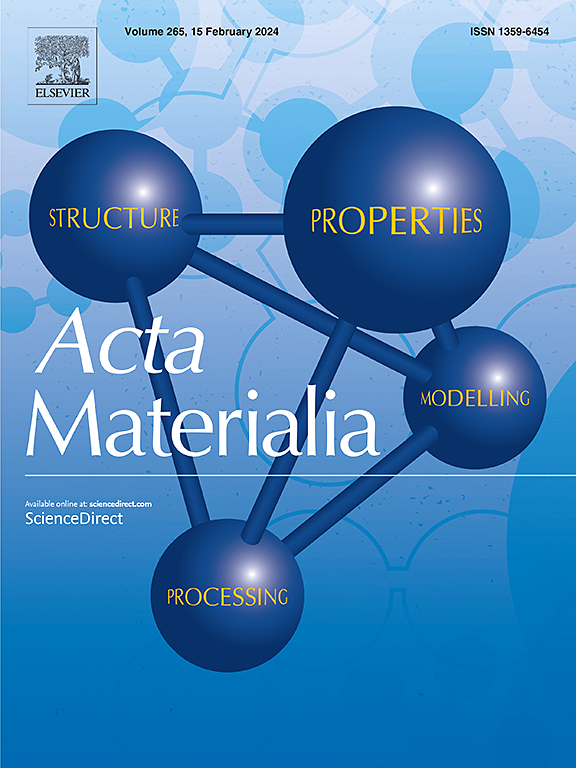热力学位错理论中有效温度的离散位错塑性评价
IF 9.3
1区 材料科学
Q1 MATERIALS SCIENCE, MULTIDISCIPLINARY
引用次数: 0
摘要
在本研究中,利用离散位错塑性(DDP)对热力学位错理论(TDT)提出的有效温度进行了评估:在小样本上进行了模拟,使其达到与先前与实验相关的TDT研究一致的饱和位错密度条件,并将稳态有效温度与玻尔兹曼公式进行了比较。本文给出了DDP的构型热公式,DDP是用来描述与位错相互作用相关的存储能量的术语,而不是存储在位错自能和其他内部结构中。对于DDP中构型热的计算,过量位错是从能量角度而不是几何角度来识别的;这些位错的相互作用能与Berdichevsky提出的对数缺陷能一致。构型热的分布表现出不均匀性,在过多位错积累的地方,它通常是高的,尽管即使在只有少数位错的地方,它也可能是高的。DDP对稳态有效温度的预测与TDT非常一致,这为这两种已建立的塑性模型提供了第一个联系。本文章由计算机程序翻译,如有差异,请以英文原文为准。

A discrete dislocation plasticity assessment of the effective temperature in thermodynamic dislocation theory
In this study, the effective temperature proposed by Thermodynamic Dislocation Theory (TDT) is assessed using Discrete Dislocation Plasticity (DDP): simulations were performed on small samples driven to a saturated dislocation density condition consistent with prior TDT studies that were correlated with experiments, with results for the steady-state effective temperature compared to the Boltzmann formula. The formulation of configurational heat is presented for DDP, which is the term assigned to describe a stored energy associated with the interaction of dislocations, as opposed to being stored in dislocation self-energy and other internal structures. For the calculation of the configurational heat in DDP, excess dislocations are identified from an energetic rather than geometric perspective; the interaction energy of those dislocations is in agreement with the logarithmic defect energy proposed by Berdichevsky. The distribution of configurational heat shows inhomogeneity, in which it is generally high where excess dislocations accumulate, although it can be of high magnitude even in places where there are only a few dislocations. DDP predictions of the steady-state effective temperature are shown to be in good agreement with TDT, providing the first connection between these two established models of plasticity.
求助全文
通过发布文献求助,成功后即可免费获取论文全文。
去求助
来源期刊

Acta Materialia
工程技术-材料科学:综合
CiteScore
16.10
自引率
8.50%
发文量
801
审稿时长
53 days
期刊介绍:
Acta Materialia serves as a platform for publishing full-length, original papers and commissioned overviews that contribute to a profound understanding of the correlation between the processing, structure, and properties of inorganic materials. The journal seeks papers with high impact potential or those that significantly propel the field forward. The scope includes the atomic and molecular arrangements, chemical and electronic structures, and microstructure of materials, focusing on their mechanical or functional behavior across all length scales, including nanostructures.
 求助内容:
求助内容: 应助结果提醒方式:
应助结果提醒方式:


